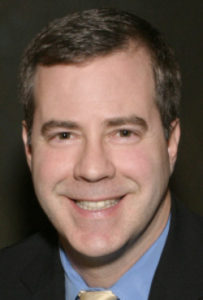August 2, 2021
By Clarke D. Newman, OD, FAAO, FBCLA, FSLS, FNAP
If the parents do not have clear in their minds that significant myopic development can lead to vision loss and other morbidities later in life, then they don’t understand the myopia management recommendation and the attending fees.

As the new paradigm of myopia management becomes mainstream, questions abound about how the services should and can be billed, to what extent one can reasonably expect vision care plans to participate, and how one presents this information to the patient’s parents.
Diagnostic Coding
This whole area of health management is evolving, and the billing, coding, and payment regimes have not caught up. The one area that is out-in-front on myopia management is the International Classification of Disease (ICD). In the current set of ICD-10 Codes, and the “Clinical Modification” set used in the U.S. (ICD-10-CM), there are codes for degenerative myopia with various co-morbidities.
| Degenerative Myopia ICD 10—CM Code H44.2 | |||||
| Without Status | With Choroidal Neovascularization
“A” |
With Macular Hole
“B” |
With Retinal Detachment
“C” |
With Foveoschisis
“D” |
With Other Maculopathy
“E” |
| H44.21 | H44.2A1 | H44.2B1 | H44.2C1 | H44.2D1 | H44.2E1 |
| H44.22 | H44.2A2 | H44.2B2 | H44.2C2 | H44.2D2 | H44.2E2 |
| H44.23 | H44.2A3 | H44.2B3 | H44.2C3 | H44.2D3 | H44.2E3 |
| 1 = RIGHT EYE 2 = LEFT EYE 3 = BILATERAL | |||||
Use the H44 Codes, not the H52, when billing for myopia management. It is important to distinguish between low myopia and the type of myopia that leads to axial elongation, for which myopia management is appropriate.
The overwhelming majority of children for whom one provides myopia management will not have any of the conditions delineated in the first denominators. That is, these children will not have neovascularization, macular holes, retinal detachments, etc. Therefore, the only correct diagnostic code most of the time would be the “Without Status” versions of H44.2, and the overwhelming majority of the time the code will be H44.23.
One might further argue that the H44 ICD 10-CM regime describes the myopic morbidity that myopia management is trying to prevent. One might say we need codes to describe “Pre-Degenerative Myopia.” Perhaps so, but until that time, I recommend using the H44.23 diagnostic code.
Billing for Services
When billing for myopia management services, there are a few schools of thought, but I believe how we do it has real merit. First, there are different methods used to manage myopia, and they each require different levels of expertise and different amounts of time. Second, one must, if using a global billing strategy as we do, decide the length of time covered by the service fee.
Next, there are differences between the services that myopia management patients need in the first year of therapy and what they need in subsequent years. These differences should be taken into account. One can charge global fees for these services, or one can charge on a per-visit basis. While the per-visit basis is more equitable to doctor and patient alike, it is harder to explain to the patient.
With global fees, the patient’s parents have a definite cost in mind. This certainty helps frame the value discussion with the parents. When one charges per visit, the amount can vary, and that uncertainty is a difficult “sell.” With a global fee, one will earn more on some patients than others, but it will even out in the end.
Using your calculated chair costs and the determined number of visits it takes to achieve success with each of the myopia management modalities, one can establish what it costs to deliver a particular service. Then one adds the desired profit to the fee.
It is essential to adjust your fees to be competitive in your area. I suggest shopping the myopia management fees of your competitors. This exercise will give you two pieces of information. First, it will tell you who in your area is doing myopia management. Second, you will see if your fees are low, high, or in the middle of the fees being charged in your area.
We have a global fee for myopia management with medication, one for hydrogel multifocal contact lenses, one for orthokeratology, and we will develop one for spectacle management as these products become commercialized. We also have a second year global fee structure for each, and we charge per eye. What you do is up to you.
The Role of Vision Care Plans
Vision care plans have not defined their role in myopia management. I think they will find it difficult to do for a couple of reasons. First, myopia management services are ideally delivered prior to severe myopia developing. The current model used by all of vision care plans would find it next to impossible to distinguish that patient from the routine myopia patient. I believe the only way they can get there is to provide a program based on the rate change in the magnitude of myopia and/or axial length. That remains to be seen.
Currently, for qualified patients, one can use the exam benefit for the initial examination of the child. If contact lenses or glasses are needed, one can use the current benefits for those services. Where we will get into trouble with vision care plans is if they start creating contractual limits on balance billing for the lenses or services or trying to claim that the extra services provided for myopia management fall under contact lens benefits.
I can see vision care plans making this claim because it increases the value of the plans and costs them nothing. This increased benefit will be at our expense, and that train is never late.
Presenting to the Parent
When presenting this issue to the parent, it is important to discuss the long-term effects of axial elongation. If the parents do not have clear in their minds that significant myopic development can lead to vision loss and other morbidities later in life, then they don’t understand the myopia management recommendation and the attending fees.
Develop brochures for each modality and ensure that you have the informed consent documents for each modality as many of these treatments are FDA “off-label” uses. Tell them exactly what each visit entails and how the fees cover those services and materials. In discussing these issues with the parents, remember that it is much easier to defuse a bomb than clean up after it goes off.

Dr. Clarke Newman is a 1986 graduate of the University Of Houston College Of Optometry, and he has been in private practice in Dallas, Texas, since. Dr. Newman is a Diplomate in the Section on Cornea, Contact Lenses, and Refractive Technologies of the American Academy of Optometry and is currently the Immediate Past Chair of the Section. He is a Distinguished Practitioner in the National Academies of Practice and is a Fellow in the British Contact Lens Association and a Fellow in the Scleral Lens Educational Society. He serves on the FDA Medical Devices Advisory Committee — Ophthalmic Devices Panel.













